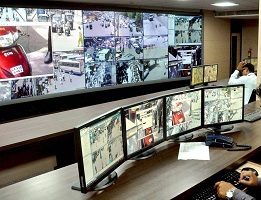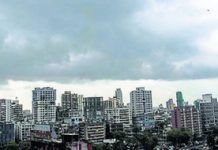At Income-Tax crossroads in Ahmedabad, you cannot get away after violating any traffic rule, be it jumping the signal or crossing the stop line. A cluster of specialized cameras has made the junction a ‘No Tolerance Zone’. Around 130 more such junctions are expected in the near future. At these junctions, each traffic offence would be captured on camera and an e-challan delivered on your doorstep.
Traffic police officials said that the city has 403 traffic junctions, out of which about 50% are covered by 226 high-definition cameras. The live feed of these cameras is observed by traffic branch officials at the control room located at the city police commissioner’s office. The officials identify the offenders and generate an e-challan on the basis of the registration plate.
“Currently, about 2,500 e-challans are generated daily because of the camera network,” a police official said. “We want to expand the network under City Surveillance and Intelligent Traffic Monitoring System (CSITMS) project and the Smart City project in collaboration with Ahmedabad Municipal Corporation(AMC).” The official further said that tenders had been issued and the police are hopeful of implementation by the year-end.
Other officials said that the target is to generate 1 lakh e-challans every day. It is an ambitious target but the experience of CSITMS has showed pros and cons of the system. “They know the areas where improvement is required, the primary thrust area being an efficient delivery system,” an official said. He further said that main purpose is to identify habitual offenders so that they can be fined more according to rules and more stringent action such as cancellation of driving license can be initiated.
“So far, over 300 names of frequent traffic violators have been given to the RTO for suspension of driving license. We accept that there is a backlog of e-challans but we are collaborating with multiple agencies for quicker delivery,” the official said. The plan for the future is to move towards technology-based challan system where dependence on handwritten memos would be minimal. Officials said that this would serve two purposes — it will make surveillance and memo generation system effective, free personnel to manage traffic in a better way and reduce complaints of corruption.








